
Guests
- Christopher Whitmanmaster’s student of Islamic and Middle Eastern studies at Hebrew University.
“I was shot at close range with a high-velocity metal tear gas canister… When it hit me, it tore off a part of my scalp,” says Christopher Whitman, a 25-year-old American student and activist who was seriously injured when he was shot by Israeli forces while attending a West Bank protest on Friday. At the time of the shooting, Whitman was recording video of the weekly nonviolent protest against the Israeli separation wall in the West Bank. Several Palestinians were also injured during the protest. [includes rush transcript]
Transcript
AMY GOODMAN: Palestinian President Mahmoud Abbas has declared three days of mourning for the 14 Palestinians killed when Israeli troops opened fire on mass protests at Israel’s multiple borders Sunday. In an unprecedented action, Palestinian refugees from Syria, Jordan and Lebanon, as well as residents of Gaza, tried to enter Israel. In addition to those killed, hundreds of people were wounded. As many as 300 people from Syria overwhelmed border patrols and briefly entered Israel. One protester described the Syria action from the hospital.
WOUNDED PROTESTER: [translated] We crossed the border and entered Majdal Shams. We clashed with the Israeli army. We threw stones, and they fired back at us. I was shot in my leg. Some people are still there. And some people were killed.
AMY GOODMAN: The mass protests came on the day that Palestinians call Nakba Day, when they mourn the 1948 establishment of Israel because of the mass expulsion of Palestinians. Lebanon, Syria and Jordan are home to hundreds of thousands of Palestinian refugees who were driven out of their homes in 1948. The bulk of Sunday’s deaths came in Lebanon, where 10 Palestinian youths were killed in the southern border town of Maroun al-Ras.
MOUFID SATEH: [translated] I tell the whole world that they should know that after May 15th and after this massacre, the Palestinians will hold their heads up high and will not surrender and lay down their arms until Palestine is liberated.
AMY GOODMAN: In Egypt, at least 350 pro-Palestinian demonstrators were injured when Egyptian police violently crushed a protest outside the Israeli embassy in Cairo. Egyptian police reportedly fired live ammunition, tear gas grenades and rubber bullets at the crowd.
The violence comes amidst a wave of protests sweeping the Arab world and a number of major developments in the Israel-Palestine conflict. Israel is trying to prevent the United Nations from recognizing an independent Palestinian state based on the 1967 borders. Earlier this month, the Palestinian factions Fatah and Hamas signed a unity deal to create a national government and hold new elections.
President Obama will host Israeli Prime Minister Benjamin Netanyahu Friday, one day after Obama delivers what aides say will be a major speech on U.S. policy in the Middle East. President Obama will also deliver an address Sunday before a gathering of the American Israel Public Affairs Committee, or AIPAC. Last week, President Obama’s Middle East envoy, George Mitchell, resigned.
For more on the border protests, we’re going to go to Cairo, Egypt, and to the Occupied Territories. In Ramallah, we’re joined by Fadi Quran. He’s a youth leader there who helped organize the protest at the Qalandiya checkpoint on Sunday.
Welcome to Democracy Now! Talk about the point of the protest and what happened, Fadi. Fadi, can you hear us?
Well, let us turn right now then to Christopher Whitman. He was seriously injured in the West Bank on Friday when he was shot by a high-velocity tear gas canister fired by Israeli forces. He is a master’s student at the Hebrew University in Islamic and Middle East studies.
Welcome, Christopher. Talk about what happened to you, what the protest was about on Friday.
CHRISTOPHER WHITMAN: Sure. Every Friday in the village of Al-Nabi Saleh in the occupied Palestinian territories north of Ramallah, there’s a peaceful demonstration against illegal land confiscation of the village’s land. Recently, they have been very violent. The Israeli reaction has been very violent. And I had been this past week. I had been a couple times before, previously, but this past week was an even bigger reaction than normal.
For the first three hours, it was mostly children between the ages of 10 and 12, who were singing nationalist songs, who were jumping up and down, dancing, trying to access their village’s land. After about three hours of this, the Israelis overreacted, started beating the older residents of the village, started throwing tear gas canisters and stun grenades at the children, and then started beating women who were wearing hijabs, started spraying pepper spray in their eyes.
This is when I started to back up. And I was about 15 meters away from the border police at this time, and he shot a tear gas canister directly at my head. As you can see, I have a bandage on my head. I was shot at close range with a high-velocity metal tear gas canister.
This protest goes on every week, and every week there’s a massive amount of injuries. The village only has about 500 people, yet every week there are almost 30 injured. So, we’re talking about eight percent of the village every week is injured and engaging in nonviolent protest, who are mostly children. We’re mostly talking about people that are under the age of 12 and over the age of 55, who are just asking and protesting for their rights to not have their land taken away to expand Jewish settlements in the Occupied Territories.
AMY GOODMAN: Explain exactly what happened when you were hit with a tear gas canister. When Tristan Anderson, who was photographing, an American press — an American freelance photographer, activist from northern California, was hit, he was critically wounded. Where was the canister from? Did you see the person who shot you, Christopher?
CHRISTOPHER WHITMAN: When I was shot, I did not see the exact person who shot it. There was a tear gas canister that was shot seconds before that was right over my head. That’s why I decided just to duck just a little bit. But when I — after I got out of the hospital, when I got home, I checked my video, and when you freeze-frame, you can actually see which soldier shot me. It was actually border police that shot me, not soldiers — I just want to clarify that. It was a border policeman who shot me. And you can see exact distance and the aiming of his rifle. You’re supposed to, when you’re in the border police in the IDF, you’re supposed to be aiming up. He aimed directly, and you can see how he aimed directly at me. And when it hit me, it hit me right here. It tore off a part of my scalp about this big. And then, two Palestinians picked me up and brought me to the ambulance.
AMY GOODMAN: And do you know where the tear gas canister was from?
CHRISTOPHER WHITMAN: I have no idea, no. I mean, I know — I’ve seen this canister a million times. It has Hebrew written on it. I’ve never seen the words “America” in Hebrew on it. I can — I know enough Hebrew to be able to read “America,” and that is not on there, so…
AMY GOODMAN: And the effect of the tear gas?
CHRISTOPHER WHITMAN: The effect of the tear gas is different from place to place. In certain villages, such as Bil’in or Nil’in or Nabi Saleh, they have a certain kind of canister. It’s a metal canister or a rubber ball, which is about this big, looks like a grenade. It’s a certain — it’s a certain potency. It’s much higher than tear gas they use in, say, East Jerusalem or protests in many other places. It’s a higher potency. I mean, even if you only get a little bit of it, every pore in your face starts to just absolutely let out any fluid that’s in there. You have to run inside of a house. You have to get away from it. You can’t rub it. You can’t touch it. You just have to let fresh air get to it. It’s very different depending on where you are.
AMY GOODMAN: Can you talk about the response in the area to the resignation of George Mitchell?
CHRISTOPHER WHITMAN: Sure. As people might know, in the Palestinian camp, there are — in Palestinian society, there are two different sectors of how to deal with the Israel-Palestine conflict. You have the people who are closer to Fatah, the main ruling party, and they generally are for a two-state solution. When they view the — they view the resignation of George Mitchell, essentially, as the last straw for the chance of a two-state solution. They view George Mitchell as basically the best of the worst. They don’t view the Americans, generally, as being honest negotiators, but they view George Mitchell, essentially, as the only person who can make Israel concede anything, given his track record in peace negotiations, given his ability to see things through a clearer image than general U.S. administrations do. So they see his resignation as kind of a symbol of the collapse of the peace process, even more so than in the past 15 years.

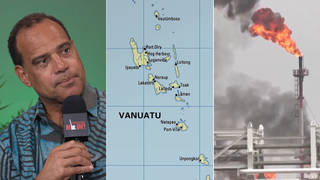
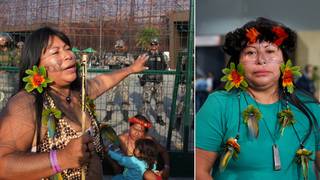
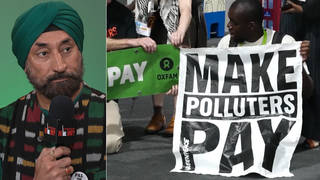
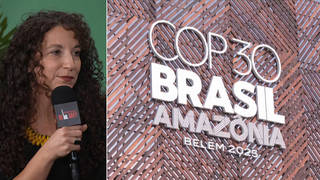





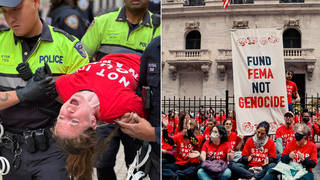
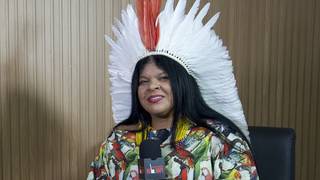
Media Options